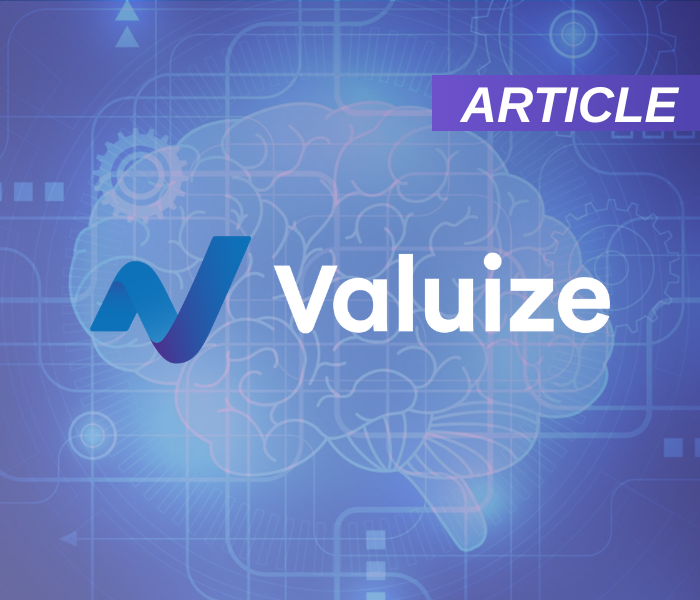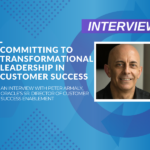So, anything interesting happening in the world of global politics? Any odd trends you’re noticing that might increase risk to your sense of the status quo? How about in the world of business? Any concerns that political matters might affect how companies plan? Any significant technology being introduced that will turn the tables on everything that’s been built over the last 20 years?
Okay, maybe irony isn’t the best way to start a new year so I’ll get to the point.
As we step into 2025, one thing is clear: we’re at a critical inflection point. Conversations over the holidays—from politics to tech to business—echoed a common theme: the landscape is shifting. Among the many intersections shaping the future, one stands out for me as an issue most are giving little thought to: artificial intelligence (AI) and customers.
Yes, customers—not just companies. While AI is often positioned as the tool to drive internal efficiencies and to shield in some way against unpredictable external forces (polycrises, anyone?), there’s a growing risk that customers are being unintentionally pushed to the margins. This happens when AI is viewed purely as a tool to optimize operations, rather than as a way to deliver measurably improved outcomes for customers.
For AI to deliver its transformative potential, leaders must shift their focus. The key isn’t just efficiency; it’s effectiveness. And that means designing AI systems with customers—not processes—at the center. Despite all the angst about AI replacing jobs, this issue – AI being able to prove it can drive better outcomes – is what business leaders should ultimately care about and where the leadership brain needs to get to work in 2025. For now, AI can’t do it without more context and that context has to come from humans.
To unlock the true power of AI, leaders need to move beyond outdated ways of thinking.
What to leave behind:
- Viewing AI primarily as a cost-cutting tool.
- Measuring success only by internal metrics (e.g., headcount reduction, processing speed).
- Treating AI as a technical project rather than a customer experience initiative.
- Automating existing processes without reimagining them.
- Relying on operational KPIs and financial metrics over customer outcomes.
- Prioritizing speed of deployment over the quality of outcomes.
Instead, to really ensure that AI has the intended transformative effect on your business, you need to adopt new ways of thinking.
- Designing AI systems with customer outcomes as the primary success metric:
- Create customer journey maps that explicitly identify desired outcomes at each stage
- Build measurement frameworks that track progress toward these outcomes
- Use cohort analysis to compare customer outcome achievement before and after AI implementation
- Set up regular customer advisory boards to validate your outcome metrics (While it’s tempting, don’t take a shortcut here)
- Building feedback loops:
- Implement real-time sentiment analysis of customer interactions
- Create automated triggers that flag when customer behavior deviates from expected paths towards the achievement of their outcomes
- Develop A/B testing frameworks for AI-driven interactions that measure outcome differences
- Set up systematic ways to collect and analyze qualitative feedback about AI-driven interactions
- Enhancing rather than replacing human judgment:
- Create clear escalation paths from AI to human agents based on complexity or emotional content
- Build AI systems that provide contextual information to human agents rather than taking over completely
- Train teams to effectively “pair” with AI tools, understanding their strengths and limitations
- Develop metrics that measure the effectiveness of human-AI collaboration (this could be challenging but this collaboration will continue to evolve and, as a leader, your skills in managing that collaboration is the key to growth for all)
- Measuring effectiveness through your customers’ success in achieving their outcomes:
- Define clear customer success team metrics tied to the achievement of their assigned customers’ business objectives
- Track leading indicators of customer health beyond traditional satisfaction scores
- Create dashboards that show both efficiency metrics and effectiveness metrics side by side
- Implement regular business reviews that focus on customer outcomes rather than just usage metrics
5. Involve Customers in AI Design:
- Launch early adopter programs for customers to test and refine AI-driven processes.
- Use interaction analytics to understand how customers actually engage with AI systems.
- Host regular feedback sessions to surface customer insights.
6. Build Hybrid Systems:
- Identify where human touch delivers the greatest value compared to AI efficiency.
- Design seamless handoff protocols that preserve customer context.
- Train human agents to work alongside AI, using it to enhance—not replace—their judgment.
The key to implementing these methods is to start small, measure carefully, and scale what works.
To succeed, leaders must balance efficiency with effectiveness. AI is a powerful tool, but its value lies in its ability to help customers achieve their outcomes—not just in reducing costs or speeding up processes.
As a leader, your role is threefold:
- Ensure resources are skilled and efficient.
- Deliver the value customers expect from their investment.
- Equip employees to excel in human-AI collaboration.
AI will soon be ubiquitous. The difference between companies that thrive and those that stagnate will come down to this: did they build systems that put customers first? In 2025, leadership isn’t about choosing between efficiency and effectiveness—it’s about mastering both.
I tried explaining it this way at Christmas dinner and between the yawns and the head nods, it seemed to work.






